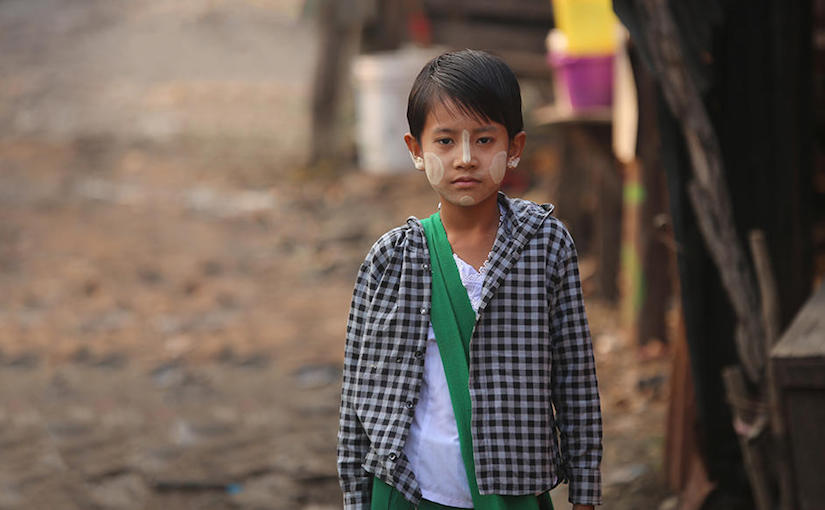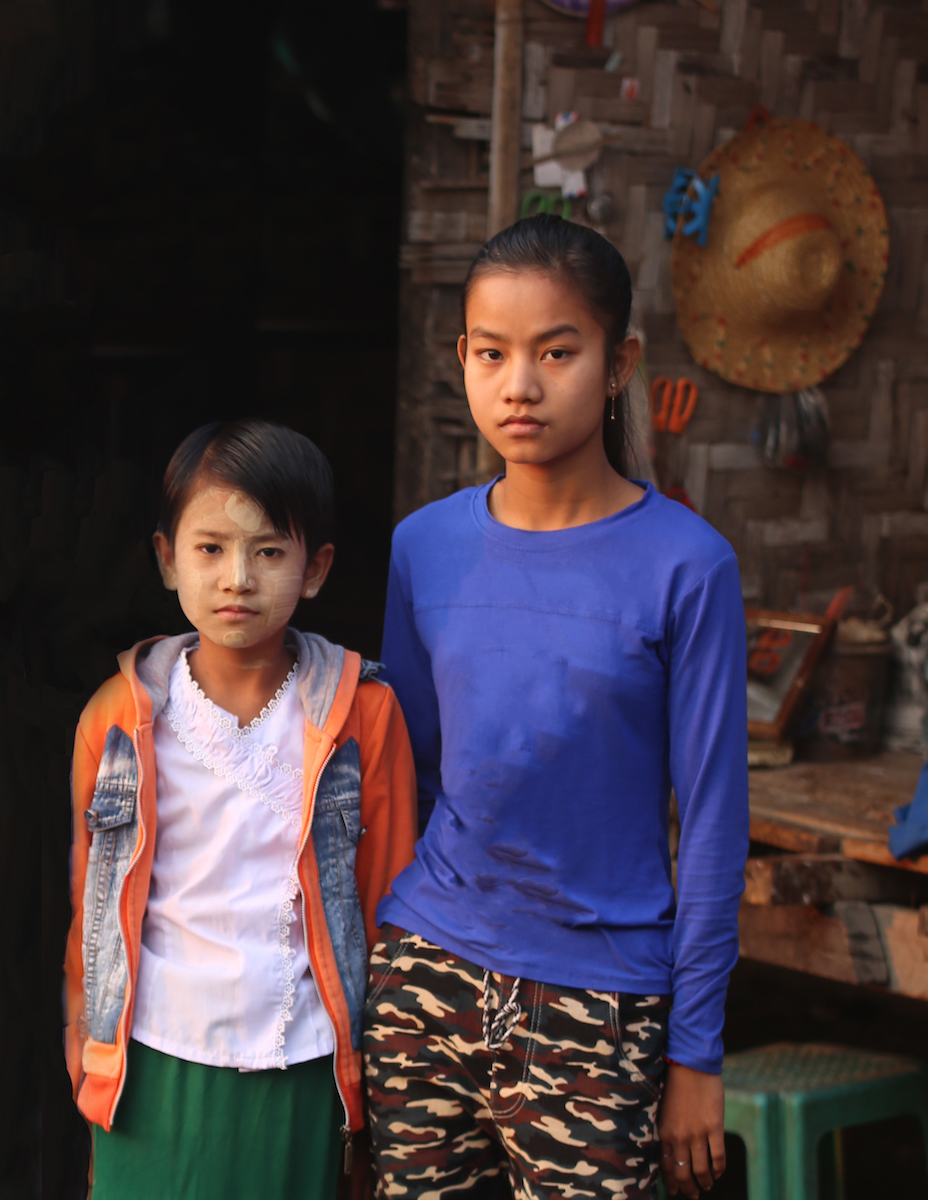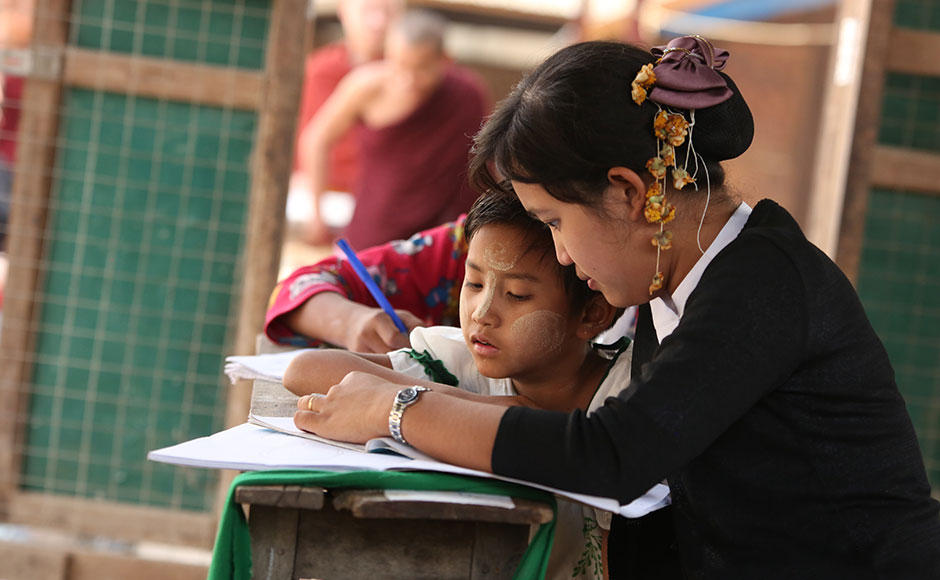Choosing Between School and Food: The Difficult Choices for Children in Myanmar
- by ChildFund Australia
- / Member Spotlight
Eight-year-old Khet Khet is the youngest of three girls. Her eldest sister, Ma Nwe, was the same age when she had to make a very difficult choice: she and her younger siblings could go hungry, or she could drop out of school to care for them so both of her parents could work.

With Ma Nwe helping at home and looking after her siblings, the family was able to manage financially for a few years. But then tragedy struck – the girls’ father passed away.
 Photo: Khet Khet and Ma New at home.Khet Khet was heartbroken. But Ma Nwe was not only devastated to lose a parent, she was terrified at what the future might hold. She knew it would be impossible for them to survive on a single income. So at just 13 years old, Ma Nwe found a job in a factory manufacturing drinking flasks, and has worked there ever since. Today, she is almost 18, and works 70 hours a week, with just one day off per month.
Photo: Khet Khet and Ma New at home.Khet Khet was heartbroken. But Ma Nwe was not only devastated to lose a parent, she was terrified at what the future might hold. She knew it would be impossible for them to survive on a single income. So at just 13 years old, Ma Nwe found a job in a factory manufacturing drinking flasks, and has worked there ever since. Today, she is almost 18, and works 70 hours a week, with just one day off per month.
Ma Nwe says: “When I had to leave school, I was still young. I didn’t feel much. But now when I see my sister go to school, I feel sorry. If I had stayed at school longer, I could get a better job.”
Read the full blog.
Khet Khet has a big dream. She wants to be a teacher and she knows it is only possible if she can get an education.
 Photo: For now, Khet Khet is in school. The odds are stacked against her completing her education.Sadly, the odds are stacked against her: In Myanmar, 1 in 4 children do not complete primary school and 1.6 million children who should be in school are working.
Photo: For now, Khet Khet is in school. The odds are stacked against her completing her education.Sadly, the odds are stacked against her: In Myanmar, 1 in 4 children do not complete primary school and 1.6 million children who should be in school are working.
Slum families, like Khet Khet’s, are not officially registered as residents, so the children are not eligible to attend public schools. Even if they were, the cost of school fees, materials and lunch is more than many families can afford.
Among low-income families in Myanmar, first-born children must often leave school early to supplement the household income. With low levels of education and few marketable skills, their employment options are limited and come with little pay – many children become domestic helpers, laborers or factory workers. They sacrifice their childhood to support their family.
VIDEO - https://www.youtube.com/watch?v=0L8rQkOTSfA
ChildFund believes that every child should be able to say: “I am educated.” So in Myanmar, we are training teachers to deliver quality lessons to young minds, funding school lunches so children do not sit in class hungry, and building more classrooms and improving learning environments.
 Photo: Daw Cho lives with her three daughters in a makeshift hut on a rubbish dump. Khet Khet does her homework on an improvised desk.
Photo: Daw Cho lives with her three daughters in a makeshift hut on a rubbish dump. Khet Khet does her homework on an improvised desk.
Education for All: bridging the knowledge gap in Myanmar
ChildFund Australia recently released Education for All: bridging the knowledge gap in Myanmar, a comprehensive report on the enormous challenges faced by Myanmar as it seeks to undo years of neglect and lack of investment in its education system.
Key findings
- Nationally, one in four children do not complete primary school, with the dropout rate even higher in poor communities. Fewer than one in three will finish upper secondary school.
- The average adult has completed only 4.7 years of schooling, less than in Laos and Bangladesh (both 5.2 years), India (6.3), China (7.6) and Thailand (7.9).
- One in five children aged 10-14 years is working.
- School attendance falls sharply from age 10, with boys often dropping out faster than girls because they can sell their labor.
According to the report, the most powerful and immediate factors undermining children's right to education are:
- the costs of education
- the poor quality of education
- poverty and child labor
As Myanmar opens up to the world, it is seen as having great economic potential, with abundant natural resources and viability as a tourism hotspot. But the country’s most significant asset is likely to be its human capital.
Access to education is not only the right of every child but will ensure that this fledgling democracy can develop a skilled workforce able to meet the challenges of the 21st century.
Read ChildFund Australia’s new report: Education for All: Bridging the Knowledge Gap in Myanmar
===
ChildFund Australia is an independent and non-religious international development organization that works to reduce poverty for children in the developing world. We work in partnership with children and their communities to create lasting change by supporting long-term community development, responding to humanitarian emergencies and promoting children’s rights.
ChildFund Australia implements programs with a range of local partners in Cambodia, Laos, Myanmar, Papua New Guinea and Vietnam, and manages projects delivered by partner organizations throughout Asia, Africa and the Americas. Our work is funded through child and community sponsorship, government grants as well as donations from individuals, trusts and foundations, and corporate organizations.











